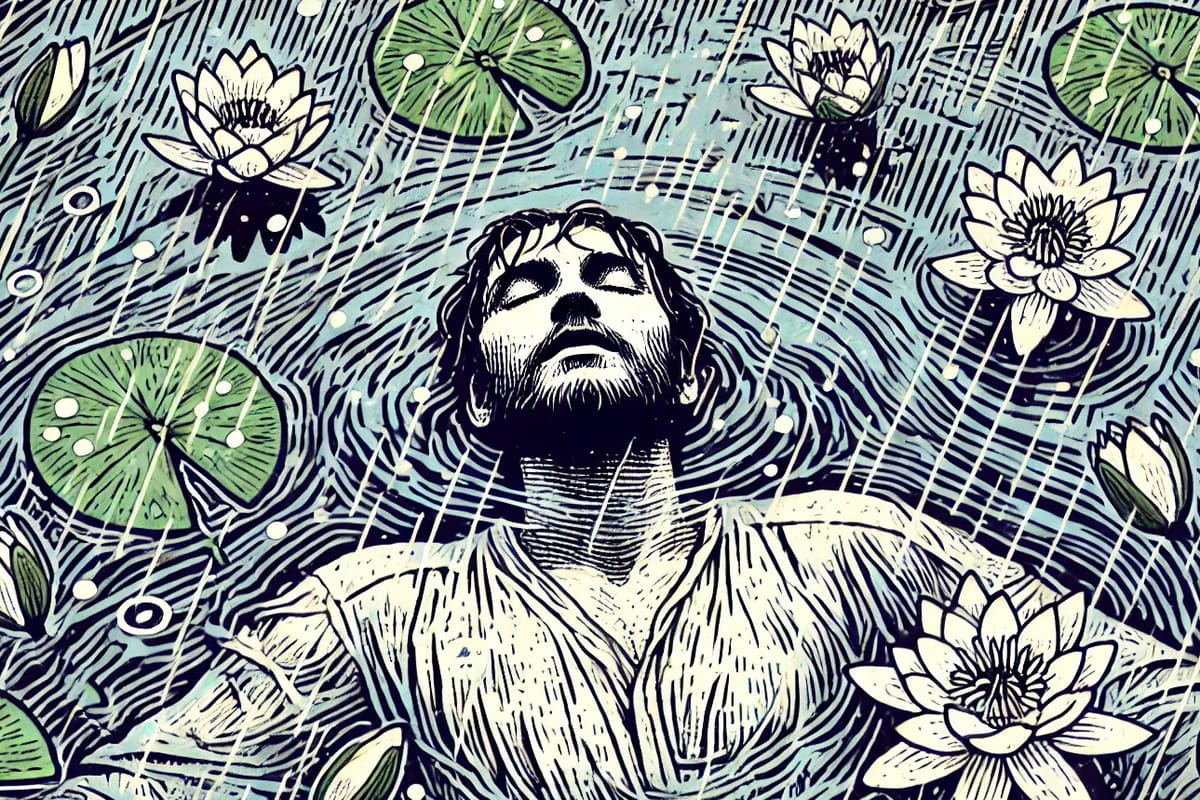A Reader's Guide for A Swim in a Pond in the Rain

The Wild Gentleman Book Club
Key Themes for Discussion
The Art of Attention
Saunders argues that reading well means noticing what's actually there—not what we expect or assume."
- Where do you find yourself "skimming"—in relationships, at work, with your children?
- How can you apply the framework of looking at situations more deeply to life more broadly?
Intention vs. Execution
Throughout the book, Saunders explores the gap between what writers intend and what actually appears on the page. The magic happens when we notice this gap and revise.
- What gaps exist between the man you intend to be and the man you're actually being?
- Can we bring the same non-judgmental attention to our own failures that Saunders brings to these stories?
Pattern and Escalation
A key insight: Stories work by establishing patterns, then varying them ("The Darling" is a great example of this. Life works the same way. We establish patterns, and growth comes from how we respond when they break.
- What patterns define your daily life? Your relationships? Your career?
- When patterns break (crisis, loss, unexpected change), how do you respond?
- Are you stuck in patterns that once served you but no longer do?
The Moral Dimension
Saunders suggests that what makes art "good" has a moral dimension—not in a preachy way, but in how it reveals truth, creates empathy, and expands our humanity.
- How does the art we consume shape our character and values?
- What role does beauty play in developing wisdom?
Reading Questions
- Which of the seven Russian stories resonated most with you? Why?
- Did Saunders's analysis change how you read the stories? Did you find yourself noticing things you might have missed?
- What does "revision" look like in real life? When have you successfully revised an approach, a habit, a relationship?
- Saunders writes about trusting your authentic responses rather than what you think you "should" think. Where in your life do you need more of this authenticity?
- The gap between intention and execution appears throughout the book. How do you notice when you're off-track in your own life? What signals tell you it's time to revise?
- These Russian stories often feature men facing moral dilemmas or their own weaknesses. What parallels do you see to modern masculine challenges?
- Saunders emphasizes patience, attention, and revision—qualities our culture doesn't always associate with masculinity. How do these "quiet" virtues relate to strength?
- The title comes from a Chekhov story about simple pleasure and presence. When was the last time you experienced that kind of unselfconscious joy?
- Which of Saunders's craft observations struck you as applicable beyond writing?
Printable PDF
A Swim in a Pond in the Rain: A Reader’s Guide for The Wild Gentleman Book Club

